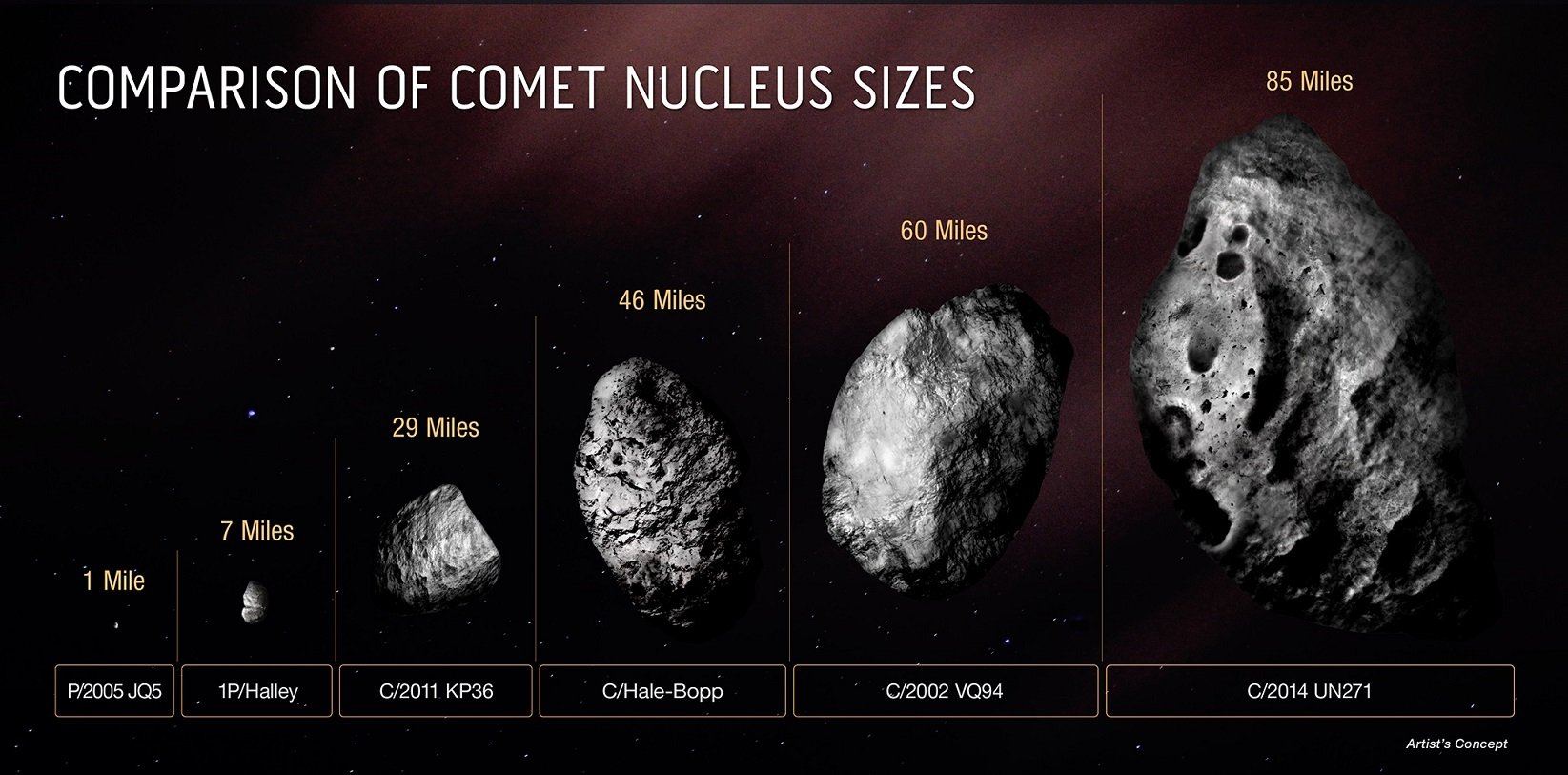Oftentimes we see the terms comets, meteoroids, and asteroids being confused with one another. So what are they, and what is actually the difference between these objects?
Gorgeous shot of comet NEOWISE
(Image Credit: Varga Jozsef Zoltan via Shutterstock / HDR tune by Universal-Sci)
Space is filled with numerous objects, many of which look like massive rocky boulders, yet they differ in name depending on the nature of the rock and where it occurs in space.
What are asteroids?
Let's begin with asteroids. Asteroids are small, rocky pieces of matter that orbit the sun. Asteroids are seen as minor planets located within the inner solar system; for that reason, they are sometimes also called planetoids.
Size
Asteroids vary enormously in size ranging from a diameter of over 500 kilometers on the upper end of the known asteroids to as small as 10 meters across on the smaller side of the scale.
Origin
Scientists believe that asteroids are the remnants left over from the early formation of our solar system that took place almost 5 billion years ago.
Where are asteroids located?
Most of the asteroids in our solar system can be found within the so-called asteroid belt, located between Jupiter on the far edge and Mars at the near edge.
NASA graphic of the asteroid belt existing between Mars and Jupiter.
(Image Credit: NASA/McREL - Edited for scale by Universal-Sci)
what is the difference between an asteroid and a comet?
Like asteroids, comets also orbit the sun, but (unlike asteroids, which are mostly made of rock and metals), they are mainly composed of ice and dust. This composure is the driving force behind one of their most defining features, the comet tail, which will be explained below.
Size
As with asteroids, comets vary significantly in size. They typically range from about a kilometer in diameter to the recently confirmed record-breaking comet nucleus known as C/2014 UN271, which has a diameter of about 130 kilometers. However, some scientists postulated the theory that Pluto is, in fact, a giant comet (made out of a billion smaller comets) which would make it the largest known comet.
Size comparison between the aforementioned C/2014 UN271 and several other comets
Image Credit: NASA, ESA, Zena Levy (STScI)
Where are comets located?
Most comets can be found in the outer perimeters of our solar system.
A portion of them is located in the so-called Oort Cloud, an enormous distant sphere of icy planetesimals that envelops our solar system at a distance of 2000 astronomical units to 200,000 astronomical units.
The remainder of comets is positioned much closer to us in the Kuiper Belt, beyond the orbit of Neptune. Closer in comparison to the Oort cloud, that is, as the Kuiper Belt is still an immensely remote region compared to the aforementioned asteroid belt.
The Oort cloud and Kuiper belt
(Image Credit: NASA via Wikimedia Commons)
Did comets bring life to Earth?
During the formation and early stages of its life, Earth was hit by many asteroids and comets. A lot of scientists believe that these comets brought a large amount of water to our planet. (Although some research suggests that the majority of water on our planet is derived from the sun)
The discovery of various organic molecules in substantial quantities on comets has led to the hypothesis that comets (or meteorites) may have also brought life (or the precursors of life) to Earth.
What are meteoroids, meteorites, and meteors?
Let's start with meteoroids. Meteoroids are basically tiny asteroids. They range in size from a diameter of one meter to the size of a grain of dust. The smallest grains are sometimes classified as 'micrometeoroids' or space dust. Beware that the term meteoroid only applies when the object is in space.
If a meteoroid enters Earth's atmosphere, it becomes a meteor for a brief moment. Because meteors usually speed up to extremely high speeds, they tend to heat up and produce a bright streak of light. Because of this, many people recognize meteors as shooting stars.
Finally, if a meteor doesn't burn up completely and hits the ground, its designation changes to meteorite. Interestingly, researchers estimate that approximately 25 million meteoroids and micrometeoroids hit the Earth each and every day, which is good for about 41 tonnes of material entering our atmosphere...
Sources and further reading:
Primordial N2 provides a cosmochemical explanation for the existence of Sputnik Planitia, Pluto (Icarus)
Asteroids in depth (NASA Science Solar System Exploration)
Dynamical Model for the Zodiac Cloud and Sporadic Meteors - The Astrophysical Journal
Comets in depth (NASA Science Solar System Exploration)
Kuiper Belt (NASA Science Solar System Exploration)
Meteors & Meteorites - (NASA Science Solar System Exploration)
Putting unfathomable astronomical distances into human perspective (Universal-Sci)
If you enjoy our selection of content consider subscribing to our newsletter (Universal-Sci Weekly)
FEATURED ARTICLES:








